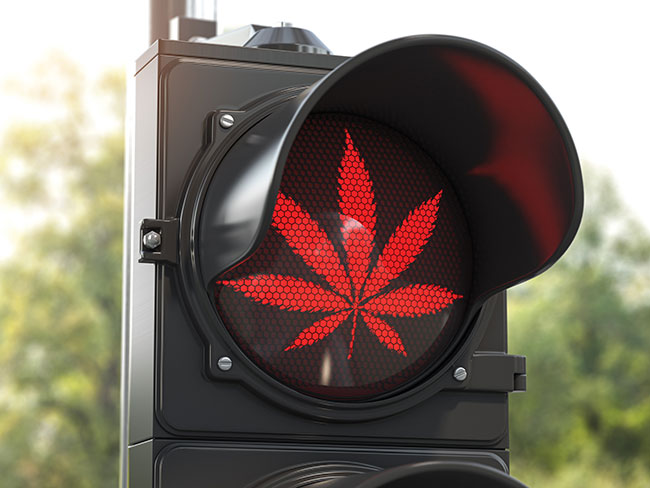
Features
Business
Regulations
Competition Bureau’s cannabis industry recommendations just the tip of the iceberg
September 26, 2023 By Denis Gertler
 Photo: Maksym Yemelyanov / Adobe Stock
Photo: Maksym Yemelyanov / Adobe Stock In the fall 2022, Canada’s Competition Bureau began to assess competition in the cannabis industry to address Health Canada’s mandated review of the Cannabis Act. Its recommendations were released in late May this year, and while sensible, do not go far enough to address what ails the industry, or most importantly, point the way forward.
The advice to streamline and reduce the cost of licensing processes, “consider adjusting” THC limits on edibles, and to ease restrictions on packaging, labelling and product promotion are fine as far as these suggestions go. Industry players have raised similar concerns.
I’d expected more from the Bureau, given its objectives of gaining a deeper understanding of industry’s competitive dynamics, gauging how the Act may be “impeding competition, innovation and choice,” and recommending measures to strengthen competition and industry innovation while reducing illicit sales.
The Bureau notes that the scope of its review is limited to matters directly regulated by Health Canada, which excludes fiscal policy and transportation safety, as well as the provinces’ role in retailing, and municipal responsibilities for policing and planning. It also rules out industry shortcomings.
To its credit, the Bureau does address the federal excise tax on recreational and medical cannabis. As others have previously noted, the excise tax rate is a massive problem which heavily bonuses the illegal market. It’s a key factor reducing LPs’ profitability due to its hit on topline revenues. And the tax clearly inhibits the government’s goal of reducing illegal sales, particularly to young persons.
While federal agencies typically refrain from commenting on federal tax policy and its administration, the Bureau does discuss the excise tax’s dysfunction, noting unpaid excise duties have climbed over 2,000 per cent since 2020 as the average price per gram of dried flower dove from $12 in 2019 to $5 this year.
The report cites a lack of industry standardization as another barrier, although I think it’s referencing the incompatible requirements across provinces and levels of government. Again, not something that Health Canada can fix on its own but certainly an initiative the federal government could lead were it so inclined. Interestingly, there is no mention of the sparse uptake on Agriculture and Agri-Food Canada’s multi-billion-dollar Canadian Agricultural Partnership, despite cannabis’ eligibility for many of its programs.
This last example points up the main problem with the discourse about competitiveness of our cannabis industry: its focus is mainly short-term. That’s understandable to some extent. When the ship is on fire, you’re reaching for the firehose not course correcting.
You’d expect the federal government who established and oversee the industry’s regulatory framework, to take responsibility and change policies and practices based on outdated or faulty assumptions. They’ve had almost five years to observe the consequences of early decisions. Comments contributed to the Cannabis Act review could certainly help if the federal government took these to heart. Some under-realized opportunities include tapping available funds to improve crop and product quality; further developing wellness markets; and reducing cannabis’s heavy carbon footprint while addressing climate change.
We also have much to learn from other business sectors. Craft cannabis deserves a more careful look, whether that involves research on genetics to drive quality and refine classifications, or to detect tainted and fraudulent products as with wine, honey and olive oil. The premium wine model offers a way to step out from the ‘race to the bottom’ as well as the slavish celebration of high THC content to sell products.
We should be studying the Emerald Triangle’s appellation system which is based on delineating terroir, regional branding, and product quality. B.C.’s Kootenays and Vancouver Island might pursue a similar approach, but so could Ontario’s Niagara peninsula and other Canadian regions.
If Canada hopes to eventually export cannabis – to tourists, medical markets and as a premium recreational product – we’ll need to establish appellations, as well as stronger supply chain certification and product standards.
Defensively, we need to pay heed to the health front. I see mainstream media devoting more attention to cannabis smoke toxicity and respiratory effects. Unlike tobacco, there’s a medicinal side to our business but also a lack of medical research. Tobacco research eventually sparked public disapproval, but cannabis has had to establish itself while dealing with pre-existing social stigma.
In truth, the federal government did not consider competitiveness as a key issue when it legalized recreational cannabis and is still limited by its single focus on health issues. This situation goes way beyond Health Canada’s mandate, and therein lies the problem: it’s not the agency’s job to nurture a new industry. But if the feds are serious about refocusing their agenda on economic matters, here’s a sector of great opportunity! There’s still time for governments and businesses to raise their sights.
Denis Gertler is a regulatory consultant, board member, and former government regulator.
Print this page